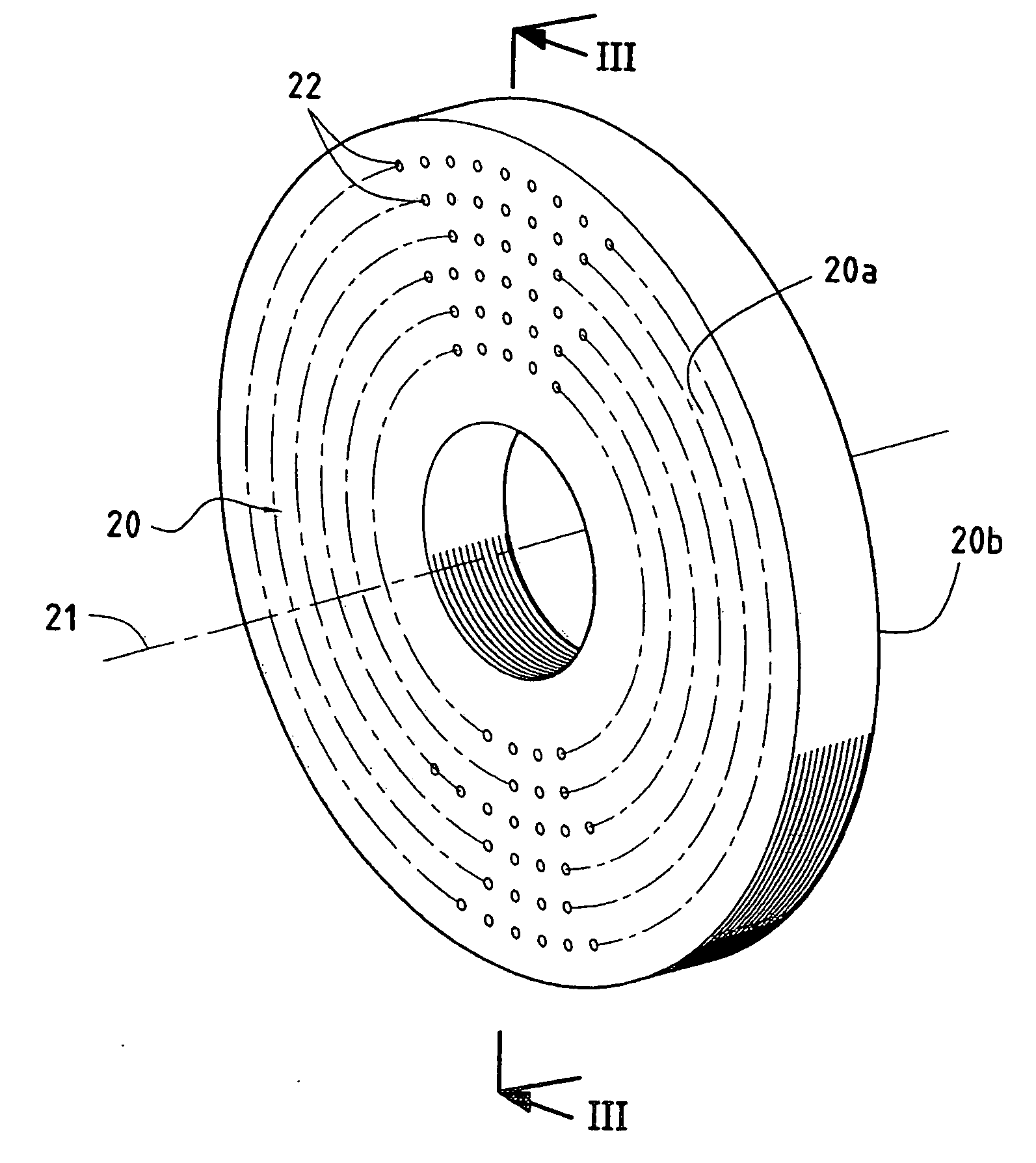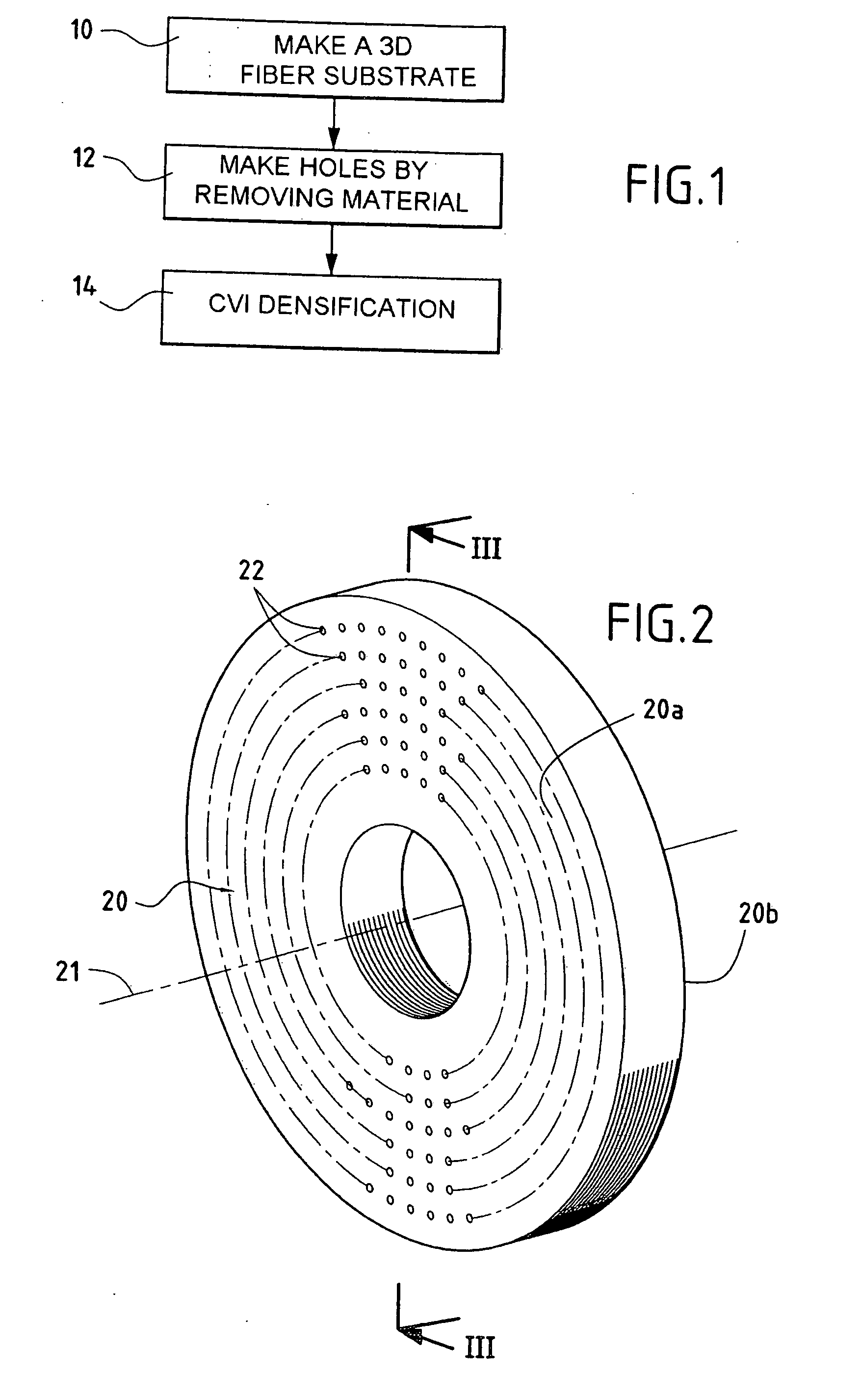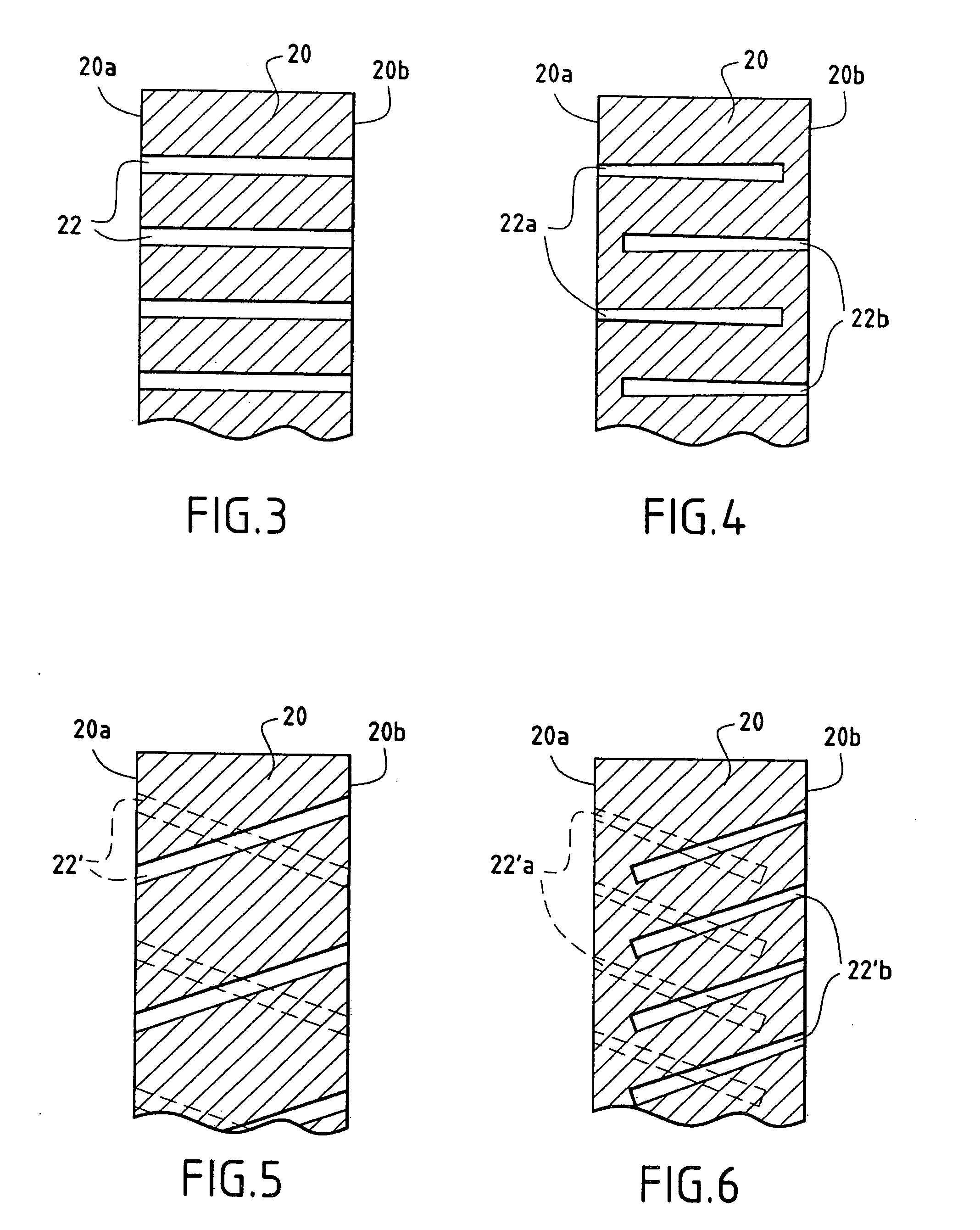Method and substrate for making composite material parts by chemical vapour infiltration densification and resulting parts
a technology of composite materials and densification substrates, which is applied in the direction of vehicle route interaction devices, nuclear engineering, railway components, etc., can solve the problems of reducing the ability of the gas to diffuse into the core, limiting the technique to certain substrate shapes and kinds, and limiting the technique to certain substrate arrangements. , to achieve the effect of reducing the number of densification cycles, facilitating the diffusion of reaction gas, and uniform densification
- Summary
- Abstract
- Description
- Claims
- Application Information
AI Technical Summary
Benefits of technology
Problems solved by technology
Method used
Image
Examples
example 1
[0077]Annular fiber preforms made of carbon fibers for airplane brake disks of C / C composite material were made as follows.
[0078]Multidirectional webs were obtained by superposing three unidirectional webs of preoxidized PAN fibers, extending at angles of +60° relative to one another and bonded together by needling. The multidirectional webs were superposed and needled together progressively as they were being superposed so as to obtain a needled plate from which annular preforms of preoxidized PAN were cut out.
[0079]The preoxidized PAN preforms were subjected to heat treatment about 1600° C. to transform the PAN into carbon. This produced carbon fiber annular preforms with inner and outer diameters of 26 cm and 48 cm, a thickness of 3.5 cm, and with a fiber volume percentage of about 23%, the fiber volume percentage being the percentage of the apparent volume of the preform that is occupied by the fibers.
[0080]Some of the preforms were pierced with through holes parallel to the axi...
example 2
[0093]The procedure was substantially the same as in Example 1, but without intermediate scalping, preparing a load in the form of a stack of annular carbon fiber preforms for stator disks and rotor disks with different preform thicknesses lying in the range 24 mm to 36 mm, and with preforms that have been performed by a jet of water under pressure (0.5 mm diameter holes at a substantially constant density of 1 hole / cm2), and with preforms that were not perforated.
[0094]A CVI densification cycle was performed to provide a pyrolytic carbon matrix, and it was interrupted at three-quarters of its total duration in order to measure the relative density of the partially-densified preforms. Table III below gives the intermediate and final mean relative density values as measured after three-quarters of the duration of the cycle and at the end of the cycle.
TABLE IIIType ofThicknessIntermediateFinalPreformdisk(mm)densitydensityNon-perforatedStator241.651.74301.651.72361.681.70Rotor28.51.711...
example 3
[0097]The procedure was substantially the same as in Example 1, but without intermediate scalping (a single densification cycle of duration practically identical to that of the cycle in Example 2), by forming a load as a stack of annular carbon fiber preforms for brake disks, comprising non-perforated preforms and preforms perforated with different densities of holes. The holes were through holes parallel to the axis and with a diameter of 0.5 mm, and they were formed by a water jet under pressure using a square array pattern as shown in FIG. 7.
[0098]The cycle was interrupted at the end of two-thirds of its total duration in order to measure the mean intermediate density then reached. Table IV below gives the intermediate and end-of-cycle measured mean relative density values for preforms presenting differing densities of holes. The rate of density increase between the intermediate pause and the end of the cycle is also given (in density points per hour), showing deposition rate ove...
PUM
| Property | Measurement | Unit |
|---|---|---|
| mean diameter | aaaaa | aaaaa |
| distance | aaaaa | aaaaa |
| diameter | aaaaa | aaaaa |
Abstract
Description
Claims
Application Information
 Login to View More
Login to View More - R&D
- Intellectual Property
- Life Sciences
- Materials
- Tech Scout
- Unparalleled Data Quality
- Higher Quality Content
- 60% Fewer Hallucinations
Browse by: Latest US Patents, China's latest patents, Technical Efficacy Thesaurus, Application Domain, Technology Topic, Popular Technical Reports.
© 2025 PatSnap. All rights reserved.Legal|Privacy policy|Modern Slavery Act Transparency Statement|Sitemap|About US| Contact US: help@patsnap.com



